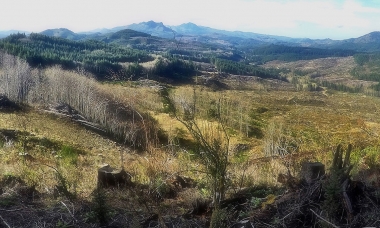
Search myodfw.com
Find maps, boundary information and the percent public land in the Paulina Unit.
Find maps, boundary descriptions and the percent public land for the Saddle Mountain Unit.

Find maps, boundary descriptions and the percent public land for the Sled Springs Unit.
Find maps, boundary descriptions and the percent public land for the Wagontire Unit.
Find maps, boundary descriptions and the percent public land for the Indigo Unit.
Find maps, boundary descriptions and the percent public land for the Willamette Unit.
Find maps, boundary descriptions and the percent public land for the Fort Rock Unit.
Find maps, boundary descriptions and the percent public land for the Melrose Unit.

Find maps, unit descriptions and the percent public lands in the Starkey Unit.
ODFW seeks applicants for two positions on the State Access and Habitat Program Board
SALEM, Ore.—Do you have a love of hunting and passion for wildlife conservation? Are you knowledgeable about forestry and/or agriculture? If so, there are vacancies for a Landowner Representative and a Hunter Representative on the Access & Habitat (A&H) Board. Applications are being accepted by the…
The Columbia Basin Wildlife Areas are a composition of four Oregon Department of Fish and Wildlife (department) managed wildlife areas located along the Columbia River, in the Columbia Basin. The four wildlife areas (Power City, Irrigon, Coyote Springs and Willow Creek) are within the Columbia Plateau ecoregion. Management agreements for these areas were initially established between 1971 and 1977 between the department and Federal agencies which own the lands. The Columbia Basin Wildlife Areas, which total approximately 1,885 acres, provide an important landbase for the conservation and recreation of fish and wildlife within a highly privatized and altered landscape and
Whether you ’re turkey hunting with a bow or shotgun, you’ll need to know when to take the shot. If you’re using a shotgun, the best shot will be at the head, preferably when it’s outstretched away from the bird’s body. Bowhunters will want to know something about turkey anatomy so they’ll recognize when they have a clear kill shot to a vital organ. Make sure it’s safe to shoot In addition to having a good shot at a bird, you’ll want to make sure there are no other hunters, livestock or other turkeys nearby that you could hit by

Turkeys are some of the best tasting game birds we hunt. The key to eliminating any “gaminess” in the meat is to take proper care of it in the field. After your shot, you’ll want to field dress your bird as quickly as possible. The goal is to cool the bird down by removing its internal organs and allowing air to circulate in the body cavity. Gutting a turkey All you need to gut a turkey is a simple pocket knife. Cut through the thin skin of the stomach from the bottom of the breastbone to the anus. Keep your

Turkey hunters using a shotgun face a very small target – the head and neck of a turkey. Combine that with today’s specialized turkey loads shooting very tight patterns, and making a clean kill shot might depend on a steady shooting rest. Turkeys are nervous-looking birds that seem to never stop moving. Because of their monocular vision and eyes set on the side of their skull, turkeys are often moving and bobbing their heads to try to decipher what they’re seeing. Consider a shooting rest If you’ve got your gun in a ready position, and are waiting for a turkey

The original Riverside Tract is adjacent to the Malheur River near the former railroad community of Riverside. It was purchased from the Blaylock family in 1976 and has been administered by ODFW as Riverside Wildlife Area since that time. The purpose of this initial acquisition was to provide public fishing and hunting access to a previously privately held portion of the Malheur River canyon. In addition, this purchase provided the opportunity for the department to emphasize fish and wildlife habitat management in the river canyon. Additional acres were added to this tract in 1977. In 1972, the department purchased a
